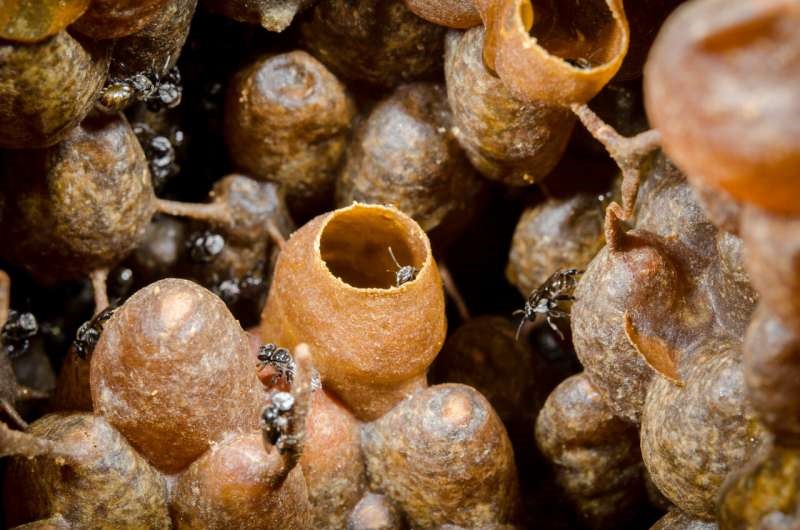Origin of rare, healthy sugar found in stingless bee honey
Tetragonula honey pots. Credit: Tobias Smith, University of Queensland
The mystery of what creates the rare, healthy sugar found in stingless bee honey, has been solved by researchers at The University of Queensland, in collaboration with Queensland Health Forensic and Scientific Services.
The team found that the sugar trehalulose—which is not found in other honey or as a major component in other food—is produced in the gut of the bees.
UQ organic chemist and research leader, Dr. Natasha Hungerford said the origin of this rare sugar had been a puzzle since the discovery of high levels of sugar trehalulose in stingless bee honey.
“We did not know if the trehalulose was coming from an external source—perhaps from native flora,” Dr. Hungerford said.
“It could have been something in the resin from trees that stingless bees collect and take home to their nest—because unlike European honey bees, which store their honey in honeycomb made only from beeswax, stingless bees store their honey in small pots made from a mix of beeswax and tree resins.”
Stingless bees are found throughout tropical and subtropical parts of the world.
The larger, European honey bees (Apis mellifera) produce significantly more honey, and are the world’s major honey production species.
However, stingless bee honey, which is highly prized as a specialty food, is noted in Indigenous cultures for its medicinal properties and attracts a high price.
“Trehalulose is more slowly digested and there is not the sudden spike in blood glucose that you get from other sugars,” Dr. Hungerford said.
She said the UQ team was keen to determine if the trehalulose content in stingless bee honey could be increased, potentially making stingless bee honey more valuable.
To read the complete article go to; Origin of rare, healthy sugar found in stingless bee honey (phys.org)
.









